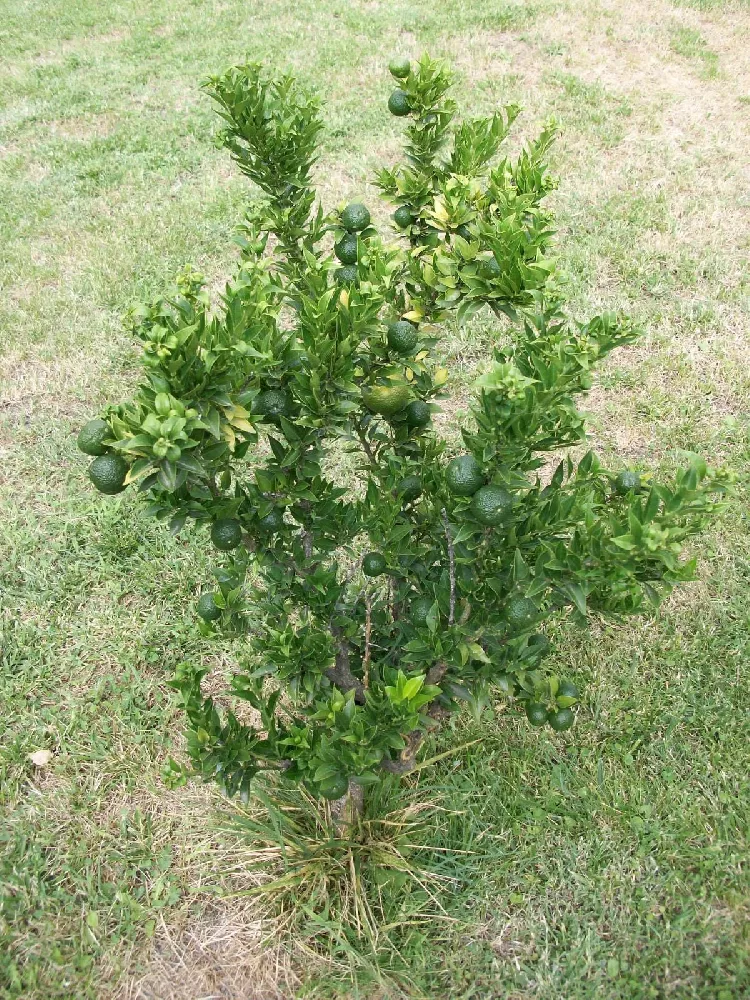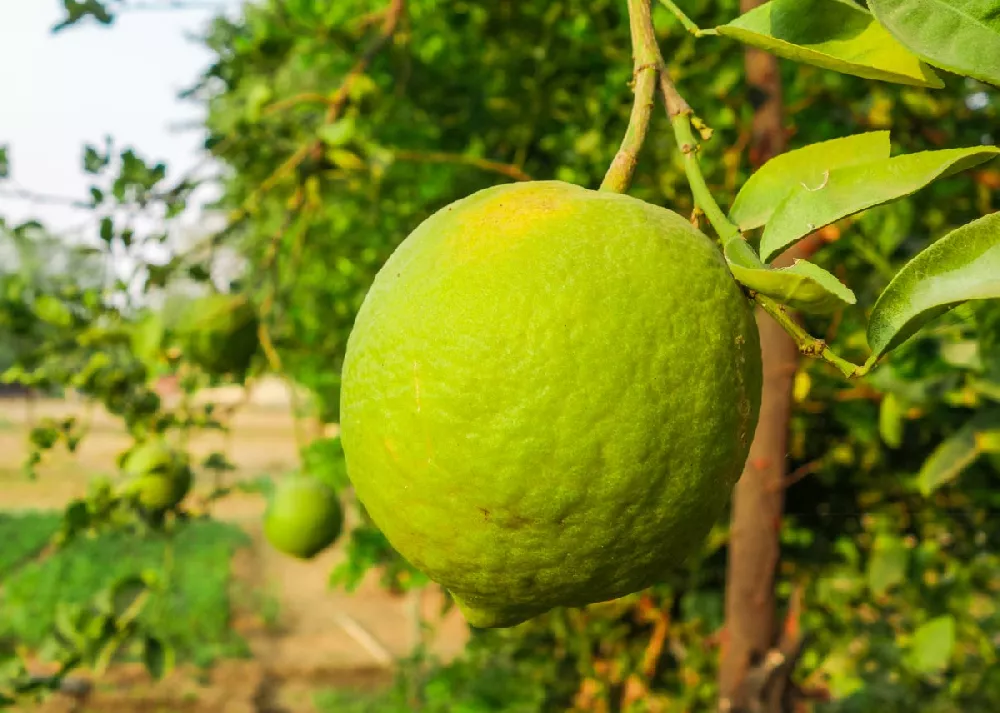- Home >
- Edible Plants >
- Key Lime Bush
Key Lime Bush for Sale - Buying & Growing Guide
- Ships in 1-2 days
- 1-Year Warranty Eligible
- Pots or accessories are not included unless specified in the product options.
Shipping Details:
Products shipped through FastGrowingTrees.com. Once your order is shipped, you’ll receive an email with a tracking number and estimated delivery date. Most orders will ship immediately.
If you've ever tasted a key lime pie, you'll understand the perennial appeal of the Key Lime bush, Citrus x aurantiifolia. The tasty concoction is made with the small, flavorful fruits of this petite and pretty bush, which can also be grown as a small tree if you prefer. Key Lime bush is a semi-tropical evergreen with glossy green leaves and attractive creamy white flowers that perfume the air when they bloom. The juicy fruits ripen throughout the year, and although they are too tart to eat raw, they provide excellent flavors for cooking and baking. If you live north of its normal range in the southern U.S., you'll be pleased to know that Key Limes are easily grown in containers and brought inside for the winter. Here are a few more reasons why you need to add a Key Lime bush to your collection:
- Disease-resistant with few natural enemies or illnesses
- Evergreen canopy provides year-round color
- Tolerates drought conditions better than other citrus trees
Plant Care
Sunlight

Key Lime bush thrives in partial to full sun — four or more hours of direct light a day.
Watering
Water whenever the soil is dry two inches below the surface; let the soil dry out between waterings.
Fertilizing

Fertilize your Key Lime with a product designed for citrus trees and bushes throughout the growing season.
Planting and Care
Planting instructions
If planting your Key Lime outdoors, site it in soil that drains well and receives at least four hours of direct sun a day. Unpot your plant and tease out any encircling roots, which can girdle the tree and slowly kill it. Dig a hole that’s as deep as the root ball and twice as wide. Place the shrub in the hole, spreading out the roots. Holding it upright and steady, fill in around it with topsoil, tamping down as you go to eliminate air pockets. Water thoroughly. Apply a two- to three-inch layer of organic mulch such as bark chips around the root zone, but keep them from touching the trunk to avoid rot problems.
Watering and nutrients
When newly planted, water your Key Lime bush every few days until you see vigorous new growth starting to appear. Then taper back to once-a-week waterings. A mature Key Lime needs water whenever the soil two inches below the surface is dry. Never let the bush stand in a puddle, however, when watering. Fertilize in spring and summer with a product that’s designed for citrus trees and shrubs. Taper back on feedings during the winter months.
Pollination
Key Lime bushes are self-fertile, meaning you may have a harvest if you only have one tree. However, your tree will produce more bountiful fruit if planted near another Key Lime. If you are growing your bush indoors, you can pollinate it by using a paintbrush to take some of the pollen from one flower to another. Repeat the process with all blooms, without cleaning the brush.
Pruning
Citrus plants such as the Key Lime don’t need a great deal of pruning. The best time to prune is after a harvest. At that time, remove any dead, diseased, or damaged limbs, as well as any suckers that have sprung up from the base of the trunk. You can also prune lightly for size if necessary.
Pests and diseases
Insect pests that you may see on your Key Lime include red spider mites, scale insects, and whiteflies. A minor infestation shouldn’t bother a healthy tree. If you’re growing your Key Lime indoors, wipe down the leaves occasionally with a damp cloth to keep insects away. Key Limes are largely disease-free, and will only rarely show signs of such diseases as blight and root rot. Avoid overwatering, and always water at the base of the trunk rather than the leaves. Keep the area around the trunk free of leaf litter and debris.
Harvesting
You may be able to harvest fruits from your Key Lime bush throughout the year, but they are most abundant from spring through fall. The fruits are usually harvested when they are green, although they will eventually turn pale yellow and become softer. They will not continue to ripen once they are off the tree. Harvest by cutting the stem above the fruit with a clean set of pruners. Keep fruit in a cool place, and use it within several days.
Achieving maximum results
In much of the continental U.S., you will need to grow your Key Lime bush in a container, bringing it inside in the winter or growing it entirely indoors. The good news is that these sturdy bushes adapt beautifully to being pot-grown. Choose a container that is roughly twice the size of the root ball with good drainage holes in the bottom.
Plant your shrub in good-quality potting soil, spreading out the roots as much as the pot allows. You may need to root-prune longer ones, but don’t leave them encircling the root ball. Note that container-grown plants may need more water than those grown in the ground and more regular feeding. Bring your Key Lime indoors whenever the temperatures are near 20 degrees Fahrenheit.
FAQs
Where can I grow Key Lime bush?
Key Limes are hardy in USDA hardiness zones 8-11, which includes some of the southern states as well as the coastal regions of California and the Pacific Northwest. However, this shrub can be container grown in most of the rest of the U.S. Just be sure to bring it inside when the temperatures dip near 20 degrees.
How big does Key Lime bush get?
When grown outside and well cared for, your Key Lime may reach a height of 8 feet, with a mature width of 6-8 feet. It is unlikely that a container-grown specimen will get that tall, however. Height can be somewhat controlled through judicious pruning, if you wish to keep your shrub smaller.
Is Key Lime toxic?
Key Lime is not toxic to humans, but dogs, cats, and horses may become ill if they eat any parts of the shrub. If you have a companion animal that is likely to nibble on your plants, it's best to keep this shrub away from them and out of their reach.
Compare Similar Products
You can't add more Product Name - Product size to the cart.
OK








